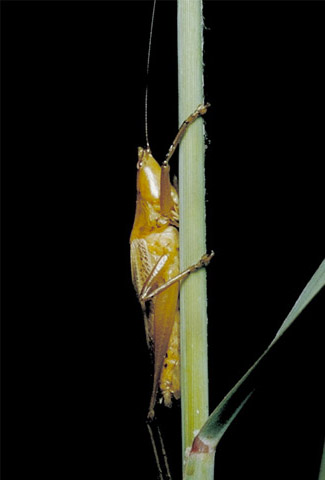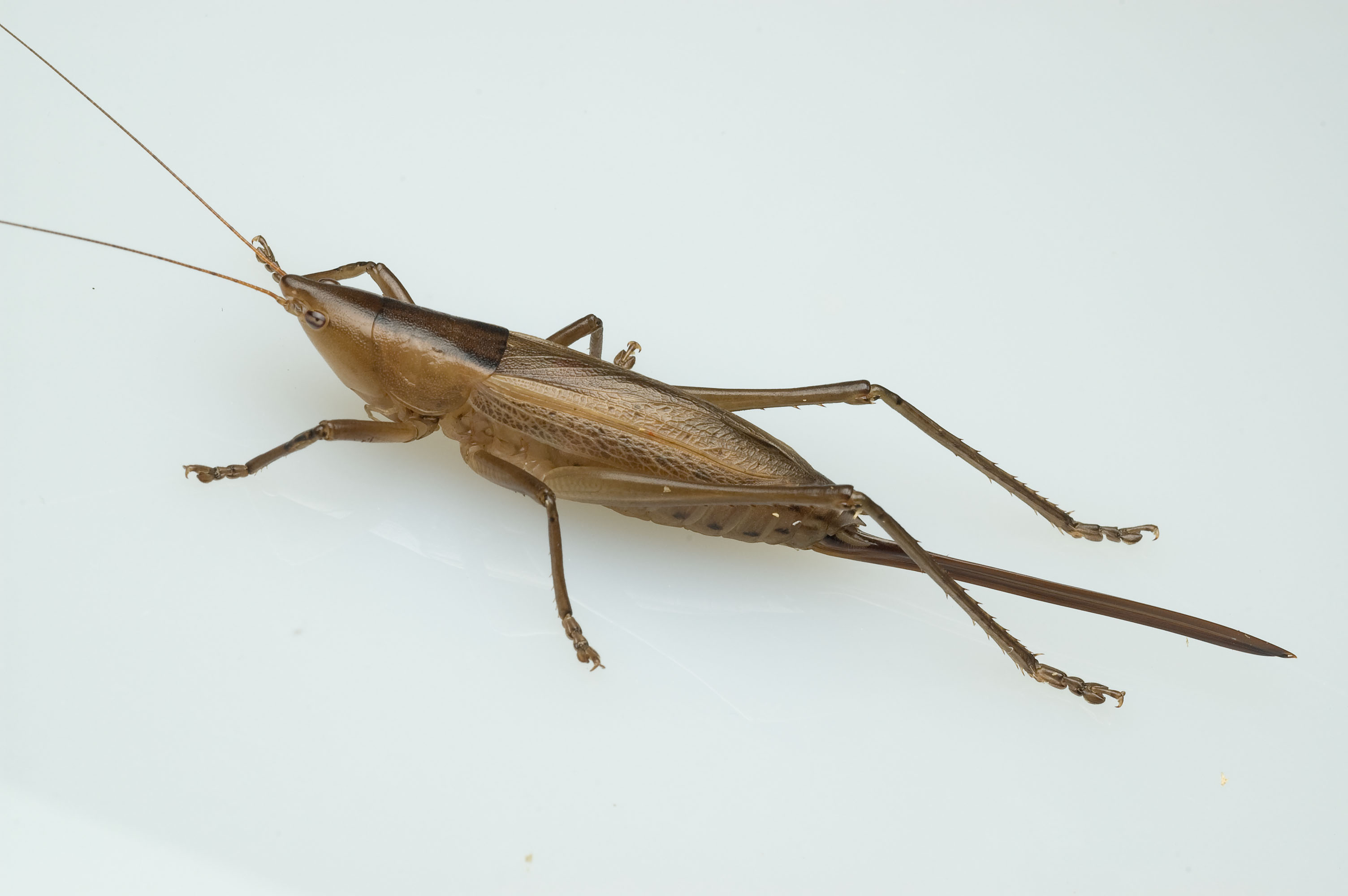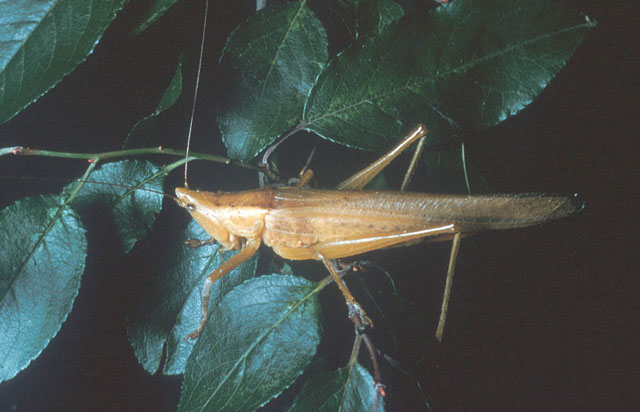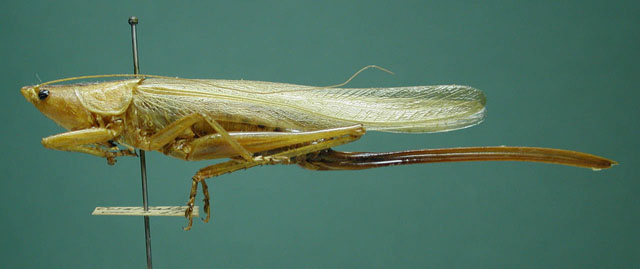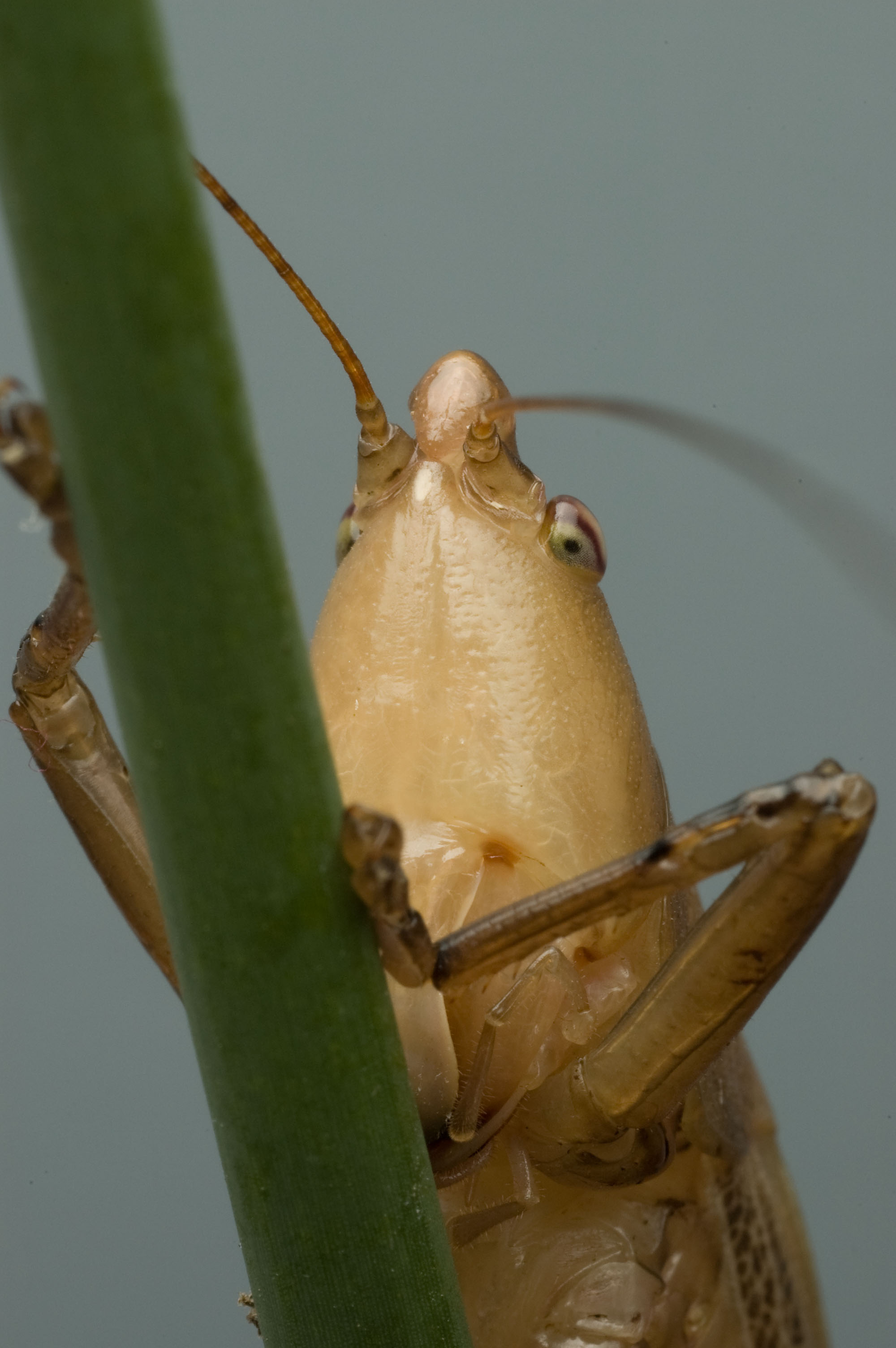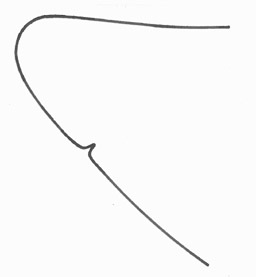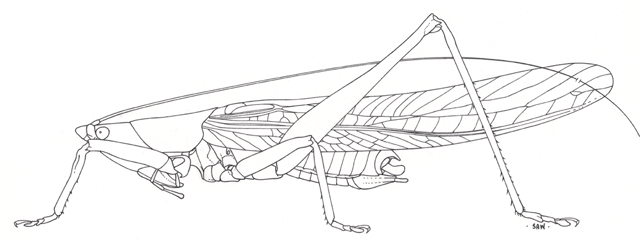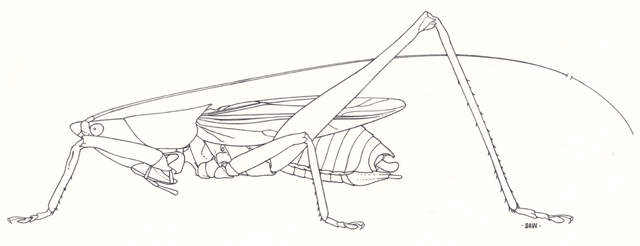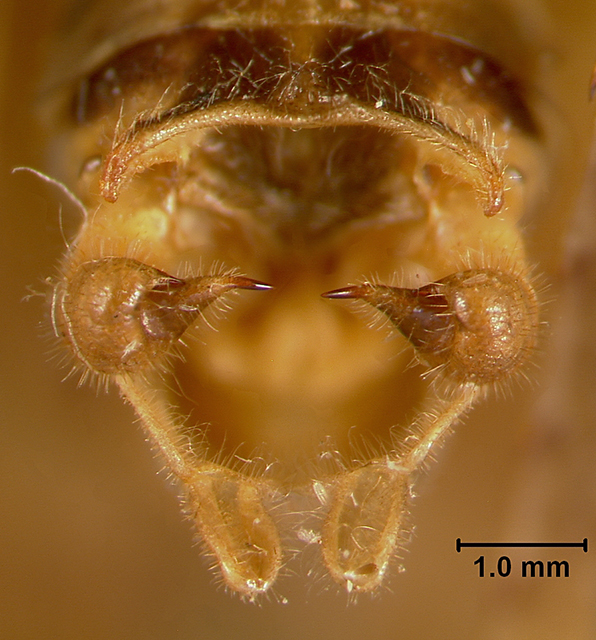|
Song:
|
Coarse, raspy buzz repeated individually or at a nearly regular rate of about 2/sec for short to medium sequences. Neighbors do not synchronize.
|
|
Song data:
|
Excel worksheet and chart (from spectrographic analyses).
|
|
Identification:
|
Cone round-tipped without a prominent gap between it and the face; wings cover most or all of abdomen.
LENGTH:
LENGTH As used in descriptions of whole insects on this site, length was measured with dial calipers from the head of the specimen to the tips of the forewings (at rest) or to the tip of the abdomen, whichever was longest. In females, the measurement excluded the ovipositor but included the subgenital plate. In males, the measurement included any ventral or dorsal abdominal process. In false katydids (Phaneropterinae), the tips of the hindwings were included in the measurement, because they were the color and texture of the forewings and in the same plane.
29-35 and 46-56 mm for short- and long-winged males; 34-46 and 57-70 for short- and long-winged females.
|
|
Similar species:
|
N. exiliscanorus is somewhat similar in habitat and quality of song, but its buzzes are shorter and more rapidly and regularly produced.
|
|
Habitat:
|
Freshwater marshes on cattails, sawgrass, and other tall grasses. Also in moist thickets and in tangled vegetation along wet or flooded ditches.
|
|
Season:
|
July–Sept., except in south Florida, where adults occur as early as April and as late as January. Perhaps breeding is continuous. Elsewhere there is one generation per year with adults appearing no earlier than June.
|
|
Seasonal data:
|
N. Fla. data.
|
|
Remarks:
|
Cattail coneheads can be short-winged and flightless or long-winged (like a Neoconocephalus and presumably airworthy). They can also be brown or green and male or female. There are thus eight possible categories; however, no long-winged, green males are known. Few males are green (<5%), but nearly 50% of females are. The short-winged form is predominant in both sexes (about 70% vs. 30% long-winged forms).
|
|
More information:
|
Subfamily Copiphorinae.
|
|
References:
|
Hebard 1939.
|
|
Nomenclature:
|
OSF (Orthoptera Species File Online).
|





